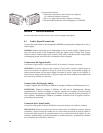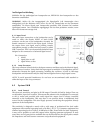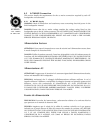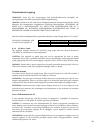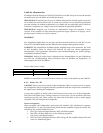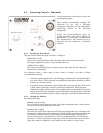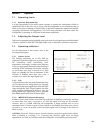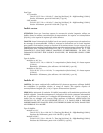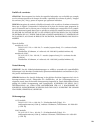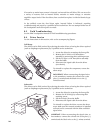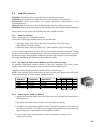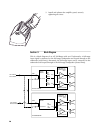
7.3.4 Amplifier Status
An Amplifier Status indicator monitors the status of each of the two amplifiers in the full-
range and subwoofer models. If illuminated Green, the amplifier status is Normal. If
illuminated Red, a protection circuit has activated and the amplifier is in Fault status.
The causes for a Fault indication can be:
• Amplifier overheating
• Power supply overheating
• Excessive amplifier output current
• Excessive power supply current
• Low ac mains voltage
• Low amplifier output voltage
• Electronic failure
To minimize audio downtime or operation at reduced levels, the protection circuits will
automatically reset after the fault condition is lowered to an acceptable level or removed.
The only exception is protective shut-down due to electronic failure.
7.3.5 Signal Present
The Signal Present indicator illuminates when an audio signal greater than 30 dBu (25 mV)
is present at the input connector.
7.4 Signal Processing
7.4.1 Internal Signal Processing
The NT Series incorporates sophisticated, digital signal processing to optimize performance
and reliability. Normally, no external signal processing is required. The internal processing
will provide excellent results in a variety of venues. The processing was determined from
extensive laboratory measurements and field testing to provide the maximum performance
in terms of frequency response, phase response, power handling, and audio quality. It affects
many aspects of the loudspeaker's performance including frequency response, beamwidth
consistency, output level capability, and wavefront coherency.
7.4.2 External Signal Processing
In some applications, external signal processing may be used because of room acoustics,
audio program content, or personal taste. In such cases, use standard analog or digital
equalizers. Avoid radical settings as these can alter the performance in adverse ways not
readily apparent, such as reducing power handling or altering the beamwidth.
7.4.3 Limiters
NT loudspeakers have built-in, factory set limiting. The limiter characteristics and settings
were determined to provide the maximum protection possible, to minimize the sonic effects,
and to integrate closely with the amplifier capabilities. Defeating such limiting by using an
external limiter could expose the drivers or amplifiers to operation beyond their limits.
External limiting should only be used to limit the maximum output to some level below that
allowed by the factory limiting. In this case, choose limiter settings that minimize the sonic
effects when the limiting is active.
20



